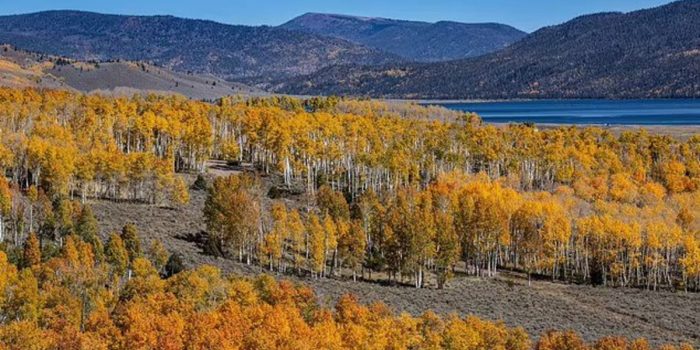Scientists have shared recordings of the strange sounds made by the Pando aspen forest in Utah. Pando is a remarkable forest made up of thousands of trees that are essentially clones, all growing from a single root system. The eerie noises captured were from millions of leaves rustling in the wind during a thunderstorm, which shook the tree to the ground, where microphones picked up the noise.
Pando is believed to be the largest and most dense organism on Earth, weighing nearly 13 million pounds and covering more than 106 acres with its clones. This 80,000-year-old forest originated from a single seed and spread by sending up new shoots from its expanding root system, creating identical trees.

Pando is located in Utah’s Fishlake National Forest and has been regenerating for 9,000 years, making it one of the oldest living organisms on the planet. Sound artists Jeff Rice and Lance Oditt from Friends of Pando used a special microphone (hydrophone) placed in a hollow branch at the base of the tree to capture these unique sounds. You can listen to them here.
‘Hydrophones don’t just need water to work,’ said Rice.
‘They can pick up vibrations from surfaces like roots as well, and when I put on my headphones, I was instantly surprised.
‘Something was happening. There was a faint sound.’
Rice wanted to capture the sounds of Pando during a thunderstorm, and when he put his headphones on, he heard a haunting rumbling come through.
‘What you’re hearing, I think, is the sound of millions of leaves in the forest, vibrating the tree and passing down through the branches, down into the earth,’ Rice said during a March presentation when he first shared the audio.
The recorded sounds are believed to be the vibrations of millions of leaves in the forest as they move in the wind, passing these vibrations through the branches into the earth. It’s like a complex communication system involving the interconnected roots of 47,000 trees.

‘It’s similar to two cans connected by a string,’ he said. ‘Except there are 47,000 cans connected by a huge root system.’
Co-author Paul Rogers from Utah State University’s Wildland Resources Department said: ‘While Pando has likely existed for thousands of years – we have no method of firmly fixing its’ age – it is now collapsing on our watch.
‘One clear lesson emerges here: we cannot independently manage wildlife and forests.’
However, despite its wonder, Pando is slowly dying due to human interference. A 2018 study found that it may not exist in as little as 50 years. Human activities like deforestation, grazing deer, and prolonged drought have taken a toll on this ancient forest. This situation highlights the importance of better managing our impact on wildlife and forests.


